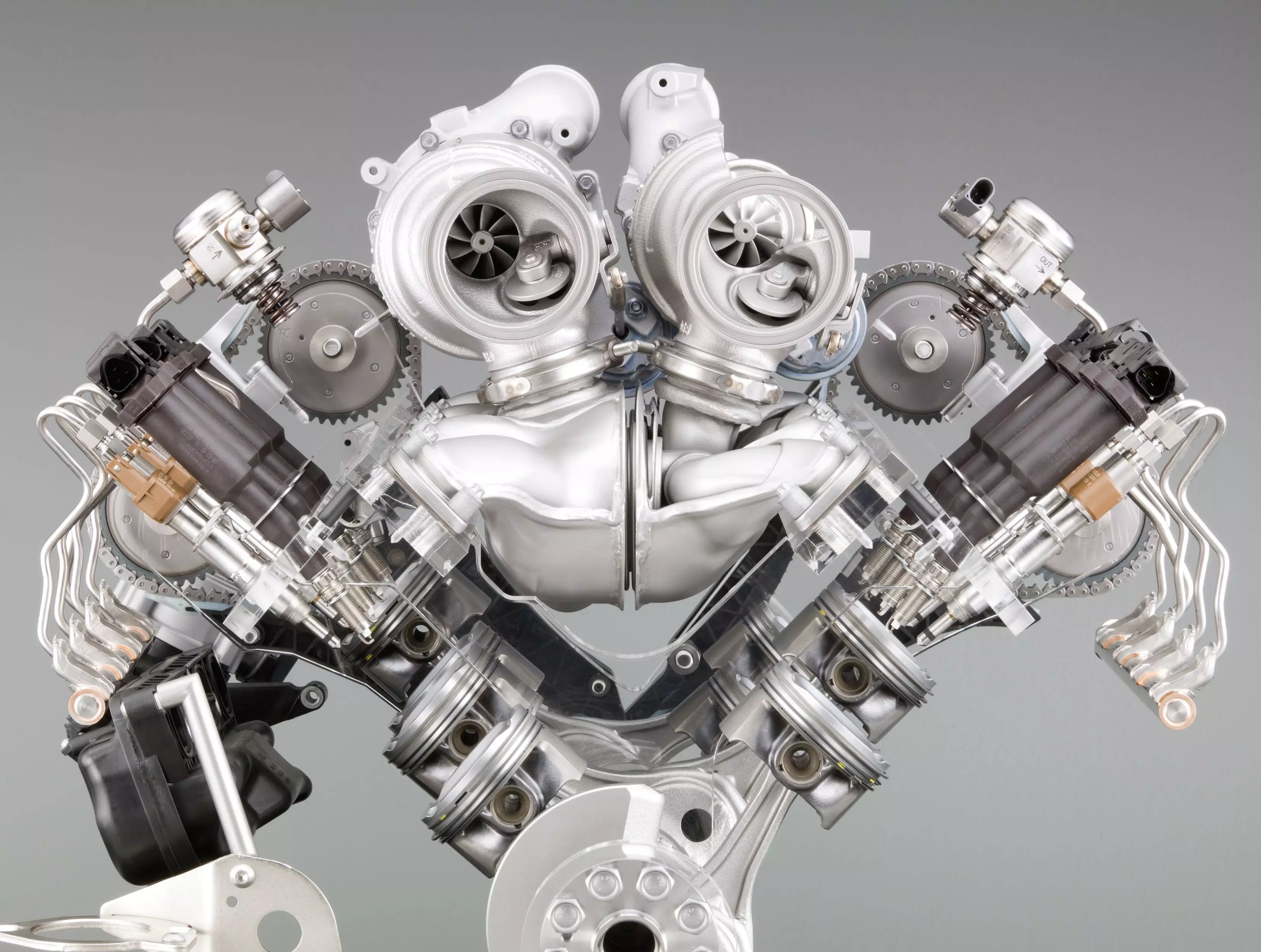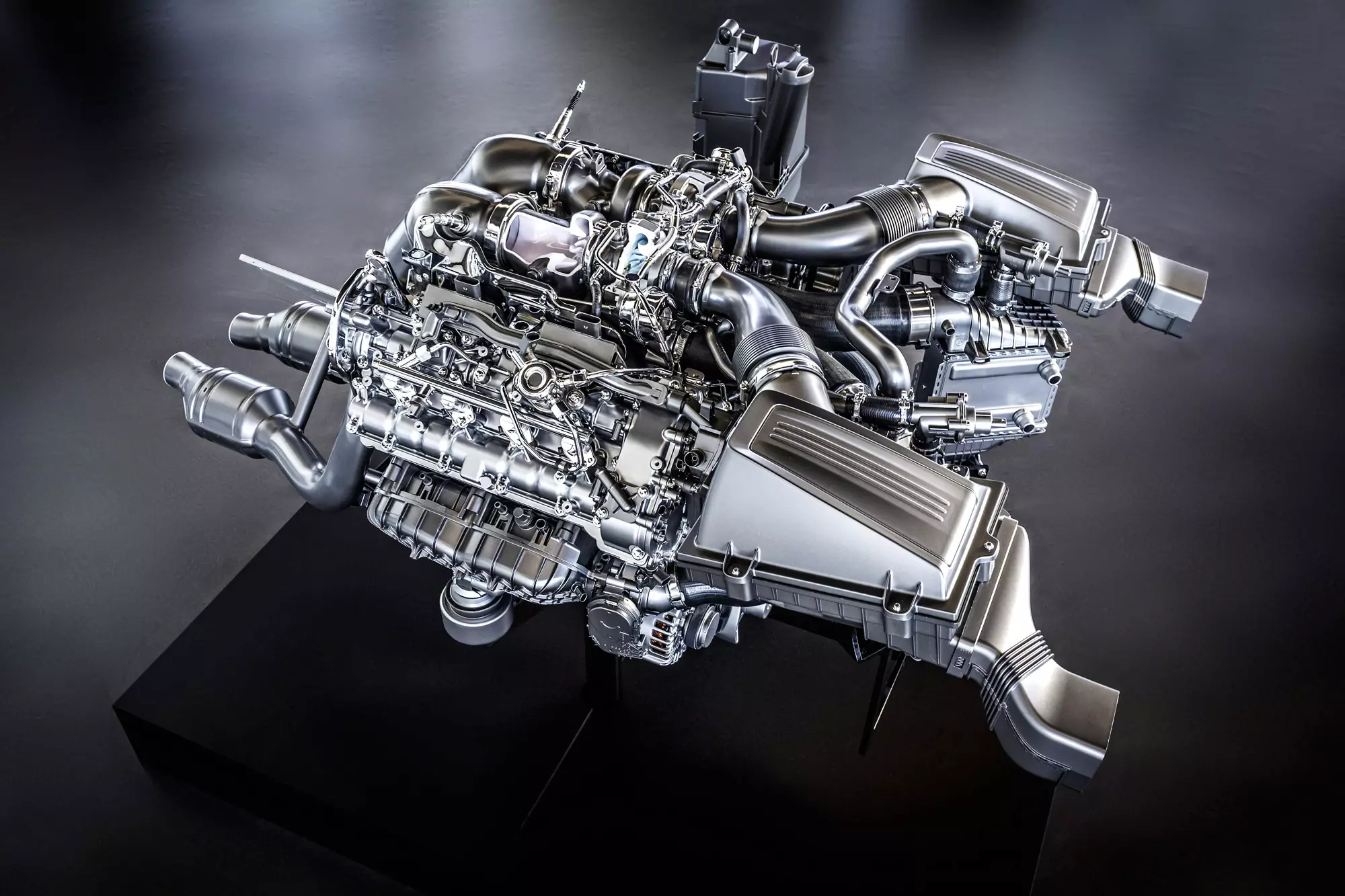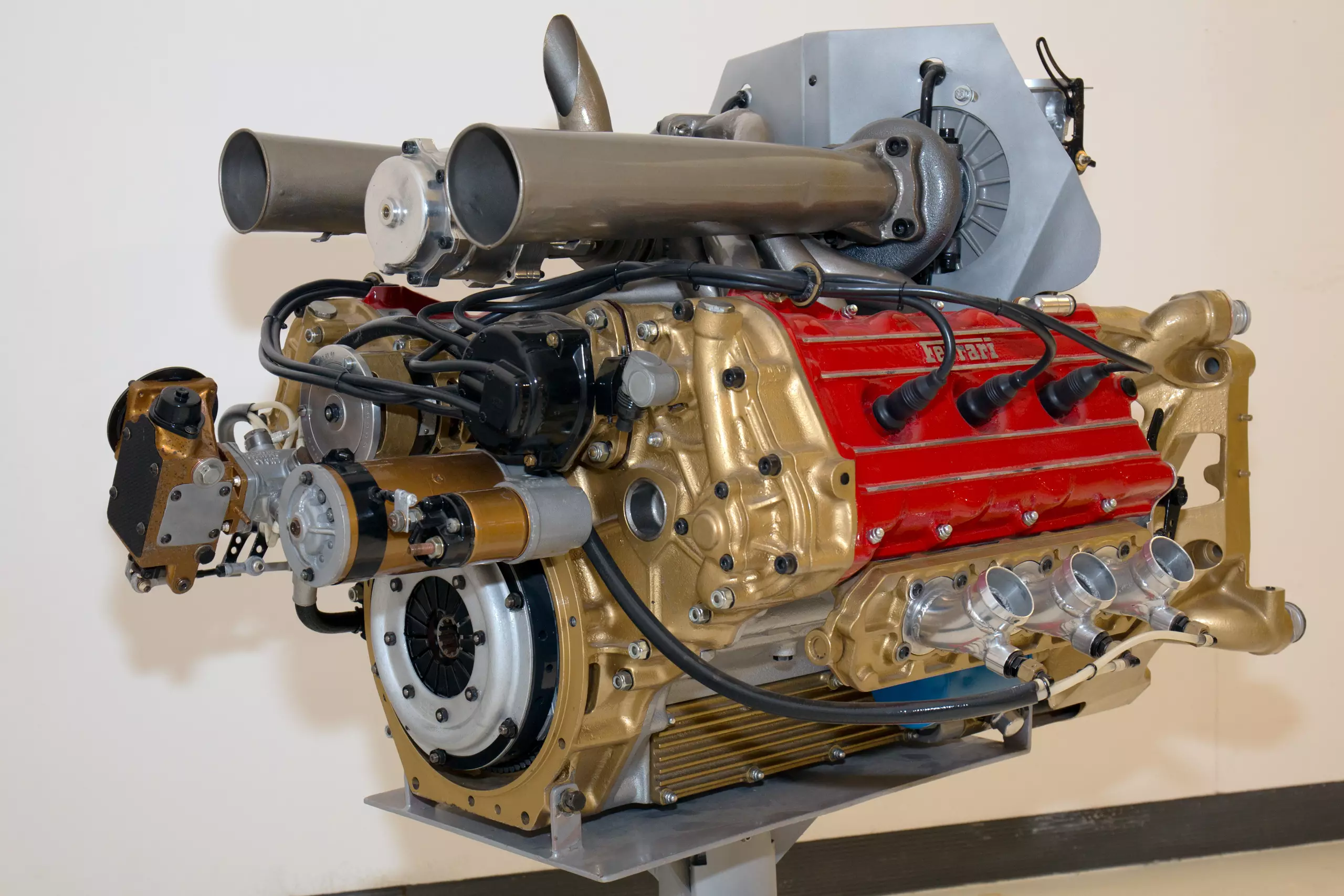Hot V , or V Hot — it sounds better in English, no doubt — was a name that gained visibility after the launch of the Mercedes-AMG GT, equipped with the M178, the all-powerful 4000cc twin-turbo V8 from Affalterbach.
But why Hot V? It has nothing to do with the adjectives of the engine's qualities, using an English-speaking expression. In fact, it is a reference to a particular aspect of the construction of engines with V-cylinder - whether gasoline or diesel - where, unlike what is usual in other Vs, the exhaust ports (in the engine head) point to the inside of the V instead of outwards, which allows to position the turbochargers between the two cylinder banks and not on the outside of them.
Why use this solution? There are three very good reasons and let's get to them in more detail.

Heat
You will see where the name Hot comes from. Turbochargers are powered by exhaust gases, depending on them to rotate properly. Exhaust gases want to be very hot — more temperature, more pressure, therefore, more speed —; this is the only way to ensure that the turbine quickly reaches its optimum rotational speed.
If the gases cool down, losing pressure, the efficiency of the turbo is also reduced, either increasing the time until the turbo rotates properly, or failing to reach the optimum rotation speed. In other words, we want to place the turbos in hot areas and close to the exhaust ports.
And with the exhaust ports pointing towards the interior of the V, and the turbos placed between the two cylinder banks, they are even in the “hot spot”, that is, in the engine area that emanates the most heat and much closer to the doors exhaust pipe — which results in fewer pipes to carry the exhaust gases, and therefore less heat loss when traveling through them.
Also the catalytic converters are positioned inside the V, instead of their usual position under the car, as these work best when they are really hot.

Packaging
As you can imagine, with all that space efficiently occupied, makes a twin-turbo V engine more compact than one with turbos placed outside the V . As it is more compact, it is also easier to place it in a greater number of models. Taking the M178 of the Mercedes-AMG GT, we can find variants of it — M176 and M177 — in several models, even in the smallest C-Class.
Another advantage is the control of the engine itself inside the compartment destined for it. The masses are more centered, making their swings more predictable.

The First Hot V
Mercedes-AMG made the Hot V designation popular, but they weren't the first to use this solution. Its rival BMW had debuted it years before — it was the first to apply this solution to a production car. The N63 engine, a twin-turbo V8, appeared in 2008 in the BMW X6 xDrive50i, and would come to equip several BMWs including the X5M, X6M or M5, where the N63 became the S63, after having passed through the hands of M. But this one The layout of the turbos inside the V was seen for the first time in competition, and then in the premier class, Formula 1, in 1981. The Ferrari 126C was the first to adopt this solution. The car was equipped with a V6 at 120º with two turbos and only 1.5 l, capable of delivering more than 570 hp.
Turbocharger control
The proximity of the turbochargers to the exhaust ports, also allows for a more precise control of these. V-engines have their own ignition sequence, which makes controlling the turbocharger more difficult, as the rotor loses and gains speed irregularly.
In a conventional twin-turbo V-engine, to attenuate this characteristic, making speed variation more predictable, requires the addition of more piping. In a Hot V, on the other hand, the balance between the engine and the turbos is better, due to the proximity of all the components, resulting in a more precise and sharpening throttle response, which is reflected in the car's control.
The Hot Vs are, therefore, a decisive step towards the “invisible” turbos, that is, we will reach a point where the difference in incisive response and linearity between a naturally aspirated engine and a turbocharged one will be imperceptible. Far from the days of machines like the Porsche 930 Turbo or Ferrari F40, where it was “nothing, nothing, nothing… TUUUUUUDO!” — not that they are less desirable because of that...
